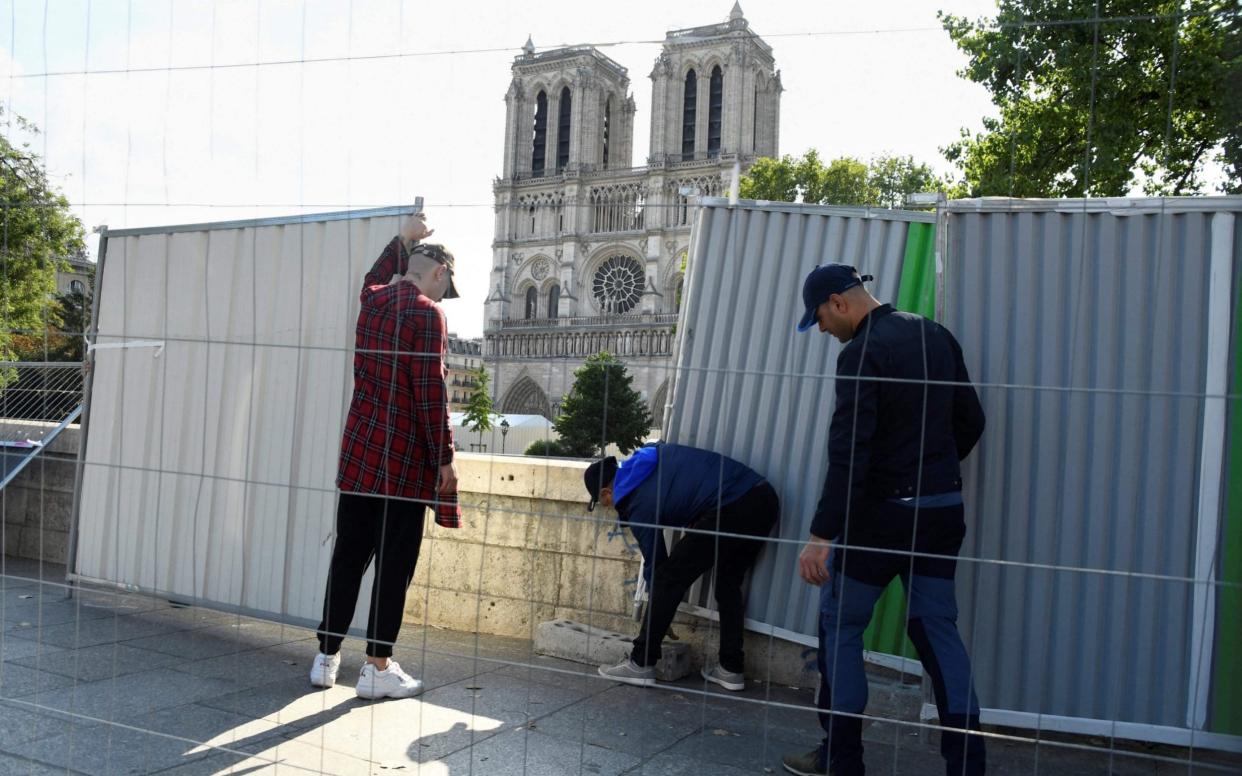Notre-Dame square closed to public as tests reveal high levels of toxic lead

- Oops!Something went wrong.Please try again later.
Paris police have closed the square in front of Notre-Dame cathedral to the public after tests revealed high concentrations of toxic lead particles.
The French Gothic masterpiece spewed out copious fumes of the toxic metal during the devastating fire of April 15, 2019 that melted 460 tons of lead panelling in the roof.
Two years on, the restoration proper of the cathedral has yet to begin as workers have spent most of their time - and €165 million (£142m) of the €833 million donated to fund the rebuilding of the cathedral – on securing the site.
In the latest setback, on Tuesday the police department said: ”Results from the most recent tests showed lead dust concentrations higher than the normal levels for Paris at certain points in the square.”
It will reopen after a new cleaning operation and "all readings are back to sufficiently low levels", it said in a statement.
After the blaze, the fallout from the toxic fumes prompted Paris authorities to close off several areas, including some schools while extensive clean-up operations took place. Children and pregnant women were urged to take blood tests.
The square was reopened a few weeks after the fire, with officials promising regular testing of the site.
The health risks posed by lead pollution delayed work on clearing debris and launching the restoration effort for the cathedral, which is under a forced march to be ready in time for the 2024 Summer Olympics in Paris.
However, Jean-Louis Georgelin, the retired general placed in charge of the project by the head of state, no longer talks of total completion before the Olympics.
Indeed, he has intimated that the 850-year-old cathedral will still be a building site then and there is no guarantee that it will have a roof when religious services resume and the tourists return in three years’ time.
While inquiries continue into the cause of the blaze, an accident, investigators say a short circuit or discarded cigarette butt are the most likely explanation.

